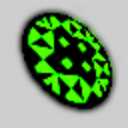Signature
I live and love in Argentina
-
 LandonPD
posted in technical issues • read more
LandonPD
posted in technical issues • read more@rjp9 Hey, what are those...sliders behind an array? Nice...
-
 LandonPD
posted in technical issues • read more
LandonPD
posted in technical issues • read moreWell, I also forget things after a day or two.
One thing that I find useful is to chunk the patch, into sections, using a very thin vertical or horizontal canvas, sometimes colour-coded. This simplifies both creating and understanding the patch later.
-
 LandonPD
posted in technical issues • read more
LandonPD
posted in technical issues • read more@Jamestocher Make sure to answer the items @gsagostinho has mentioned, please.
-
 LandonPD
posted in output~ • read more
LandonPD
posted in output~ • read moreHi, @lilakmonoke . I would also like to listen to the things that don't turn out so well.
You know, the good things are not the only ones that we enjoy!
I'm curious about the other stuff...
-
 LandonPD
posted in technical issues • read more
LandonPD
posted in technical issues • read more@elunicotomas Read the author's comments at "H T T P S"://vimeo.com/84516862, that might give you some clues.
-
 LandonPD
posted in technical issues • read more
LandonPD
posted in technical issues • read morePerhaps, it's worth mentioning that there are two branches of exploration. One involves amplitude and the other involves volume.
Amplitude is measurable, complicated but still measurable. Volume is a different story since it has to do with perception. In this latter case, one needs to have a model of the human ear, or at least some information about how the ear/brain responds to various frequencies and amplitudes. More advanced, and CPU expensive patches, should compensate for high and low frequency audio. Very low and high frequencies are less audible than mid or upper-mid frequencies.
So depending on exactly what you want to preserve from your original signal (amplitude or volume), there are different paths that you can follow.
For example, if your input signal has a small amplitude, you might want your distorted output to sound less mid-range-like. For solving this perceptual issue, you can automatically detect low level passages and activate a dynamically changing filter that reduces a bit the mid range.
Just some food for thought...for experimenters or artists out there, or in here.
There's a little nice resource called the Interactive Ear Sensitivity Chart: http://www.independentrecording.net/irn/resources/freqchart/ear_sensitivity.htm
You can also enjoy this other interactive chart too: http://www.independentrecording.net/irn/resources/freqchart/main_display.htm
Cordially, Landon
-
 LandonPD
posted in technical issues • read more
LandonPD
posted in technical issues • read more@gsagostinho Thanks for sharing that idea Gilberto, you're awesome, as always. More variables to achieve our oniric distortions.
-
 LandonPD
posted in technical issues • read more
LandonPD
posted in technical issues • read more@EEight said:
@LandonPD Not sure, but looks like the level (volume) is not like the source when applying the distortion. Have a look at this (overlay of full distortion vs no distortion) [...].
The idea is that you first find a distortion amount that you like and you leave it like that for some time.
For example, set it to a distortion amount of 1, and then move the pre up and down...you'll see that the waveform keeps being almost square no matter the level of pre. (When the waveform gets too small, use the zoom tool...it will allow you to see that the waveform keeps being distorted even if you cannot listen to it).
